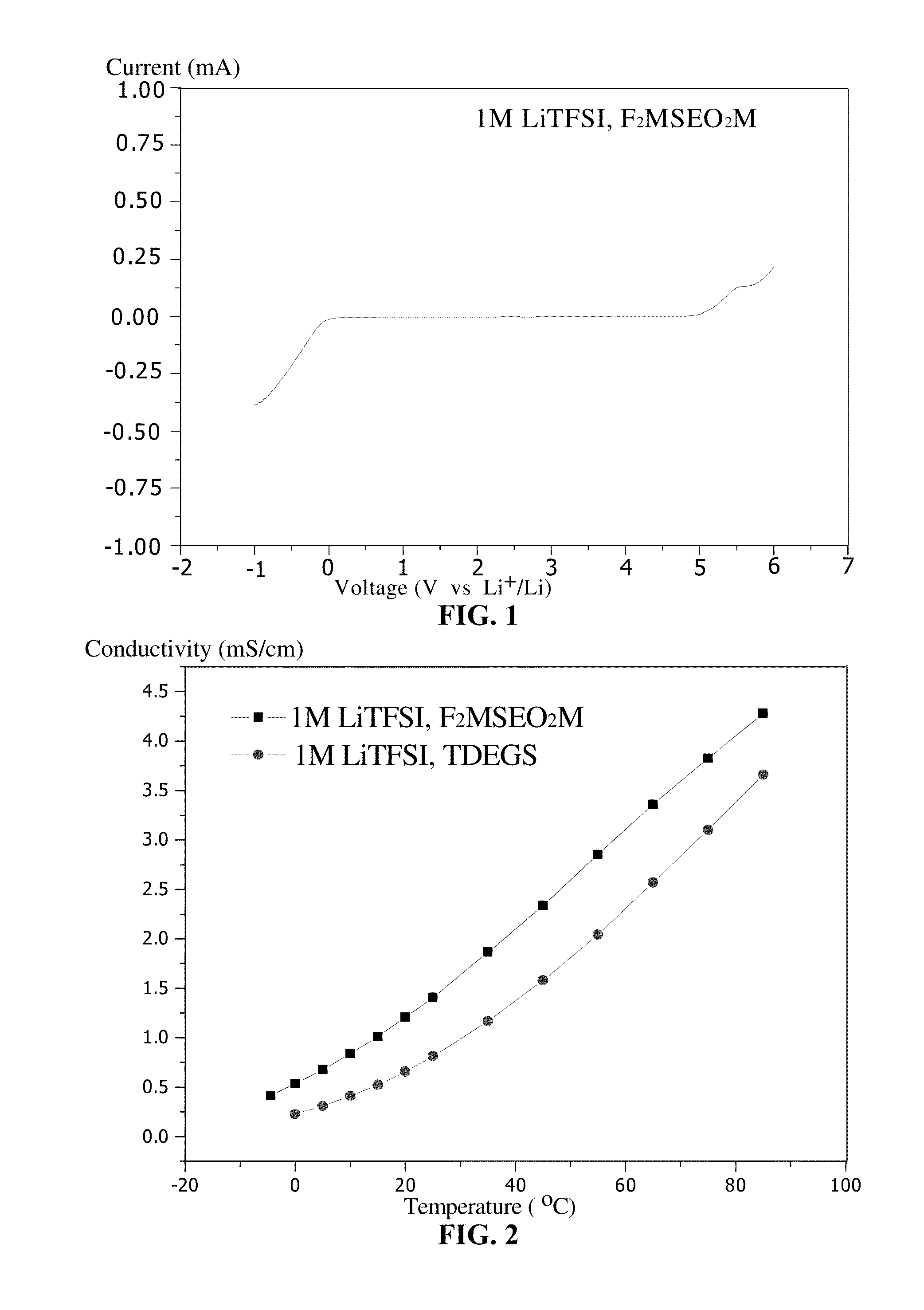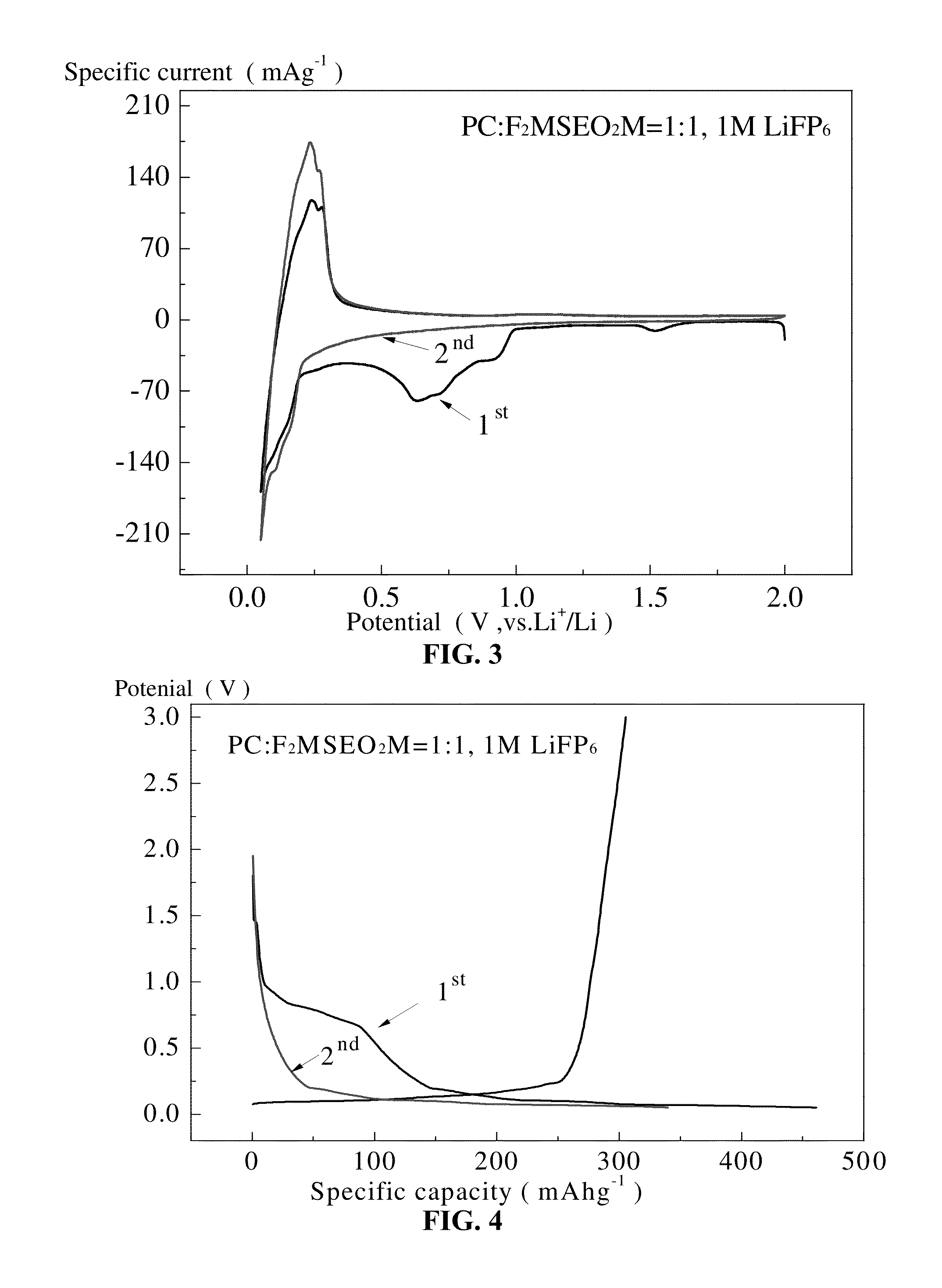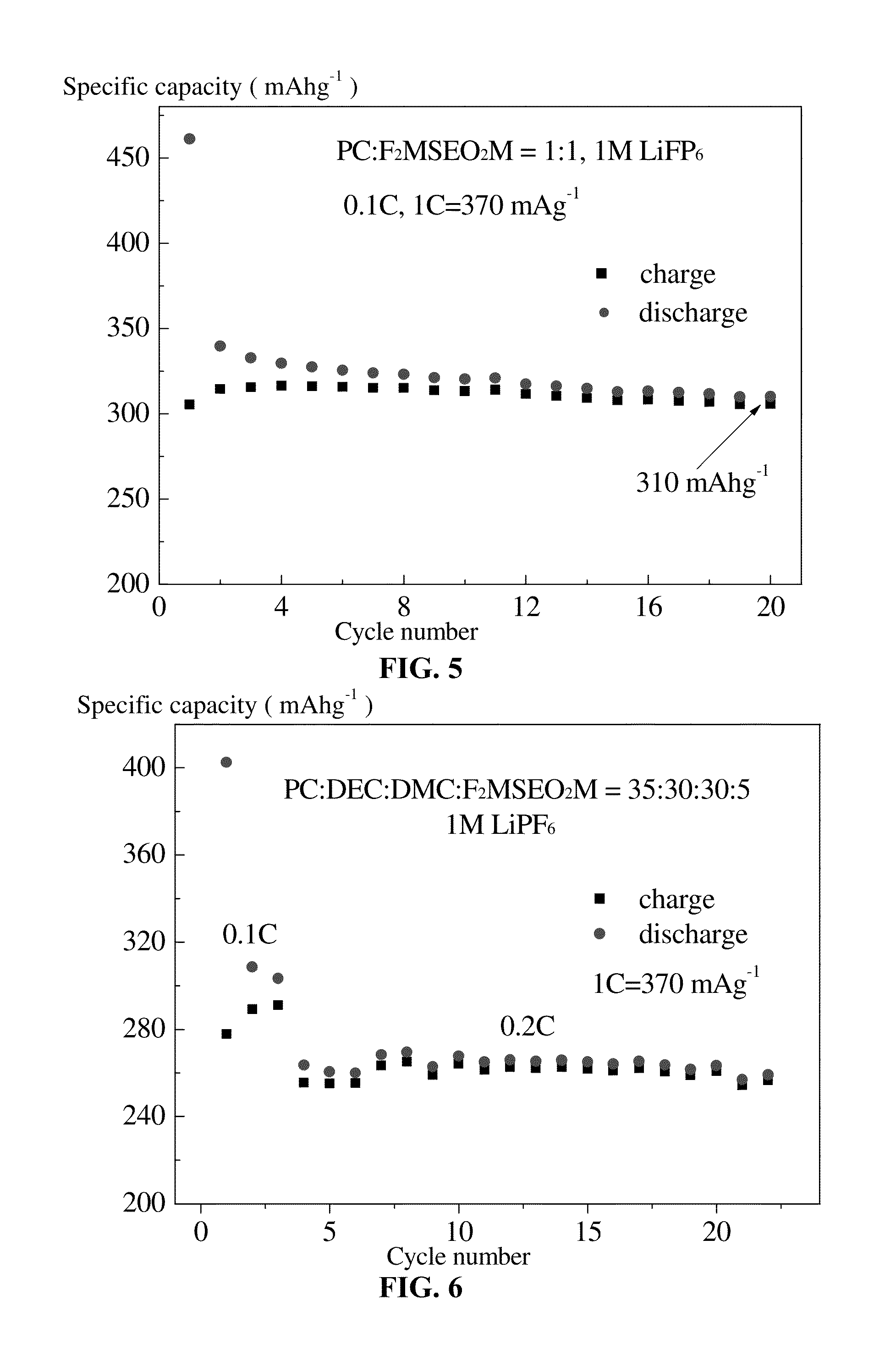Organohalosilane and use thereof in electrolytes of non-aqueous lithium ion batteries
a technology of organic halosilane and electrolytes, which is applied in the direction of organic chemistry, electrochemical generators, chemistry apparatuses and processes, etc., can solve the problems of high flammability of carbonate compounds, and achieve the effects of high efficiency, easy operation and popularization
- Summary
- Abstract
- Description
- Claims
- Application Information
AI Technical Summary
Benefits of technology
Problems solved by technology
Method used
Image
Examples
example 1
Preparation of 3-(methoxyethoxy) propyl-methyl-difluoro-silane (F2MSEOM)
[0033]Under protection of argon, ethylene glycol monomethyl ether (61 g, 0.8 mol) was added to a two-mouthed round bottom flask (250 mL), followed by the addition of metal sodium (4.6 g, 0.2 mol) in batches. The flask was heated to 80° C. until metal sodium disappeared, and then 3-chloropropyl diethoxymethylsilane (42.1 g, 0.2 mol) was added, heated gradually to 120° C., and allowed to react for 24 hours. The reaction mixture was cooled to room temperature, filtered by suction, distilled under reduced pressure, thus yielding 44.5 g of colorless liquid, that is, 3-(methoxyethoxy) propyl methyl bis(methoxyethoxy) silane, b. p.: 135° C. (3 mmHg), yield: 60%. Under protection of argon, 98% of boron trifluoride etherate (29.43 g, 0.203 mol) was added dropwise to 3-(methoxyethoxy) propyl methyl bis(methoxyethoxy) silane (21.03 g, 0.067 mol). The resulting mixture was allowed to react at room temperature for 30 hours, ...
example 2
Preparation of 3-(methoxydiethoxy) propyl-methyl-difluoro-silane (F2MSEO2M)
[0038]Under protection of argon, diethylene glycol monomethyl ether (74.4 g, 0.62 mol) was added to a two-mouthed round bottom flask (250 mL), followed by the addition of metal sodium (7 g, 0.3 mol) in batches. The flask was heated to 80° C. until metal sodium disappeared, and then 3-chloropropyl diethoxymethylsilane (62.7 g, 0.29 mol) was added, heated gradually to 120° C., and allowed to react for 24 hours. The reaction mixture was cooled to room temperature, filtered by suction, distilled under reduced pressure, thus yielding 58.8 g of colorless liquid, that is, 3-(methoxydiethoxy) propyl methyl bis(methoxydiethoxy) silane, b. p.: 170° C. (3 mmHg), yield: 65%. Under protection of argon, 46.6% of boron trifluoride etherate (29.43 g, 0.09 mol) was added dropwise to 40 mL of a toluene solution comprising 3-(methoxydiethoxy) propyl methyl bis(methoxydiethoxy) silane (15.9 g, 0.03 mol). The resulting mixture wa...
example 3
Preparation of 3-(methoxytriethoxy) propyl-methyl-difluoro-silane (F2MSEO3M)
[0043]Under protection of argon, triethylene glycol monomethyl ether (149.91 g, 0.91 mol) was added to a two-mouthed round bottom flask (250 mL), followed by the addition of metal sodium (7 g, 0.304 mol) in batches. The flask was heated to 80° C. until metal sodium disappeared, and then 3-chloropropyl diethoxymethylsilane (64 g, 0.304 mol) was added, heated gradually to 130° C., and allowed to react for 24 hours. The reaction mixture was cooled to room temperature, and then 200 mL of toluene and 46.5% of boron trifluoride etherate (186 g, 0.61 mol) were added dropwise. The resulting mixture was heated to 85° C. and allowed to react for 4 hours, and then cooled, filtered by suction, and distilled under reduced pressure to yield 39 g of colorless transparent liquid, that is, 3-(methoxytriethoxy) propyl-methyl-difluoro-silane, b. p.: 121° C. (3 mmHg), yield: 45%.
3-(methoxytriethoxy) propyl-methyl-difluoro-silan...
PUM
| Property | Measurement | Unit |
|---|---|---|
| temperature | aaaaa | aaaaa |
| temperature | aaaaa | aaaaa |
| temperature | aaaaa | aaaaa |
Abstract
Description
Claims
Application Information
 Login to View More
Login to View More - R&D
- Intellectual Property
- Life Sciences
- Materials
- Tech Scout
- Unparalleled Data Quality
- Higher Quality Content
- 60% Fewer Hallucinations
Browse by: Latest US Patents, China's latest patents, Technical Efficacy Thesaurus, Application Domain, Technology Topic, Popular Technical Reports.
© 2025 PatSnap. All rights reserved.Legal|Privacy policy|Modern Slavery Act Transparency Statement|Sitemap|About US| Contact US: help@patsnap.com



